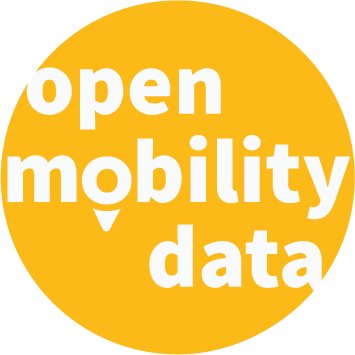Mock sample for your project: OpenAQ API
Integrate with "OpenAQ API" from openaq.local in no time with Mockoon's ready to use mock sample
OpenAQ
openaq.local
Version: 2.0.0
Integrate third-party APIs faster by using "OpenAQ API" ready-to-use mock sample. Mocking this API will help you accelerate your development lifecycles and improves your integration tests' quality and reliability by accounting for random failures, slow response time, etc.
It also helps reduce your dependency on third-party APIs: no more accounts to create, API keys to provision, accesses to configure, unplanned downtime, etc.
Description
API for OpenAQ LCS
Other APIs in the same category
Google My Business API
The Google My Business API provides an interface for managing business location information on Google.

Cloud-RF API
cloudrf.com
Use this JSON API to build and test radio links for any radio, anywhere. Authenticate with your API2.0 key in the request header as key
Checks API
NOTE: This is a preview of the API and it is not considered stable since refinements are still being made.
Introduction
Welcome to the Truora Check RESTful API reference. You may also want to check out our Validations API docs or our Signals API docs.
Truora Check API allows performing full background checks on people, vehicles and companies. There are three main types of background checks:
Personal background check: Verifies national IDs in multiple databases of public and legal entities in the LATAM region. For every national ID, returns information on: personal identity, criminal records, international background check, and professional background.
Vehicle background check: Verifies the vehicle documents and the owner identity in multiple databases of public and legal entities in the LATAM region. For every vehicle and owner type, returns information on: personal identity, driving records, criminal records, and vehicle information.
Company background check: Verifies the tax ID or a company name in multiple databases of public and legal entities in the LATAM region. For every company, returns the associated: business status, legal and criminal records, and media reports.
API Key V1 is live!
API key version 1 is now live. Users with version 0 API keys are not immediately required to upgrade to V1 but should plan to do so at their earliest convenience. The changes for integration with API keys v1 are as follows:
The field `user_authorized` is now required to perform person checks. This field indicates the API user has authorization to perform the check in compliance with data protection law.
The field `homonym_scores` is no longer included in our person check response as its results are already included in the body of the check and keeping them duplicated is generating unnecessary confusion.
API composition
Endpoints
Check endpoints: Provide an easy way to create and search for a background check. They also allow inserting groups of checks into reports. Each check contains scores, datasets and databases.
SDKs
If your favorite language was not on the next list, You can use our OpenAPI 3 spec to generate it using the Open API Generator.
To download the SDK click on the desired programming language:
C# .Net Core
Elixir
Go
Java
JavaScript
Objc
Php
Python
Ruby
You can see the full list of supported platforms here:
https://openapi-generator.tech/docs/generators
Introduction
Welcome to the Truora Check RESTful API reference. You may also want to check out our Validations API docs or our Signals API docs.
Truora Check API allows performing full background checks on people, vehicles and companies. There are three main types of background checks:
Personal background check: Verifies national IDs in multiple databases of public and legal entities in the LATAM region. For every national ID, returns information on: personal identity, criminal records, international background check, and professional background.
Vehicle background check: Verifies the vehicle documents and the owner identity in multiple databases of public and legal entities in the LATAM region. For every vehicle and owner type, returns information on: personal identity, driving records, criminal records, and vehicle information.
Company background check: Verifies the tax ID or a company name in multiple databases of public and legal entities in the LATAM region. For every company, returns the associated: business status, legal and criminal records, and media reports.
API Key V1 is live!
API key version 1 is now live. Users with version 0 API keys are not immediately required to upgrade to V1 but should plan to do so at their earliest convenience. The changes for integration with API keys v1 are as follows:
The field `user_authorized` is now required to perform person checks. This field indicates the API user has authorization to perform the check in compliance with data protection law.
The field `homonym_scores` is no longer included in our person check response as its results are already included in the body of the check and keeping them duplicated is generating unnecessary confusion.
API composition
Endpoints
Check endpoints: Provide an easy way to create and search for a background check. They also allow inserting groups of checks into reports. Each check contains scores, datasets and databases.
SDKs
If your favorite language was not on the next list, You can use our OpenAPI 3 spec to generate it using the Open API Generator.
To download the SDK click on the desired programming language:
C# .Net Core
Elixir
Go
Java
JavaScript
Objc
Php
Python
Ruby
You can see the full list of supported platforms here:
https://openapi-generator.tech/docs/generators

Daymet Single Pixel Extraction Tool API
ornl.gov
Welcome to the Daymet Single Pixel Extraction Tool API. You can use this API to download daily surface data within the Daymet database in a csv or json format for a single point. This API allows users to query a single geographic point by latitude and longitude in decimal degrees. A routine is executed that translates the (lon, lat) coordinates into projected Daymet (x,y) Lambert Conformal Coordinates. These coordinates are used to access the Daymet database of daily interpolated surface weather variables. Daily data from the nearest 1 km x 1 km Daymet grid cell are extracted from the database.
If you would like to learn how to automate the download of multiple locations for the Daymet Single Pixel Extraction Tool, click here.
If you would like to learn how to automate the download of multiple locations for the Daymet Single Pixel Extraction Tool, click here.

Visual Crossing Weather API
Weather Forecast and Historical Weather Observation Data via an convenient, restful API.

TransitFeeds API
API to view feed information and download feeds from TransitFeeds.com
IdealPostcodes API
ideal-postcodes.co.uk
Open API spec for Ideal Postcodes API (api.ideal-postcodes.co.uk)
Space Radiation API
amentum.space
Space has a hostile radiation environment that increases the risk of cancers in humans and malfunctions in spacecraft electronics. The types of space radiation of primary concern are:
Galactic Cosmic Rays from outside our solar system generated by
supernovae and other phenomena;
Solar Energetic Particles produced by the Sun during intense and
sporadic bursts of activity; and
Trapped Radiation: energetic particles confined by Earth's magnetic
field, usually comprising an inner belt of mostly high energy protons
and an outer belt dominated by lower energy electrons and plasma.
Understanding the space radiation environment for a particular mission profile is becoming increasingly important. Commercial off-the-shelf electronic components that aren't resilient to space radiation are now prevalent. Longer duration missions to cislunar space, Mars, and beyond are placing astronauts at greater risk of radiation exposure.
API requests must contain a key "API-Key" in the header (see code samples). Obtain a key from here.
Help us improve the quality of our web APIs by completing our 2 minute survey here.
Amentum Pty Ltd is not responsible nor liable for any loss or damage of any sort incurred as a result of using the API.
Copyright Amentum Pty Ltd 2021.
Galactic Cosmic Rays from outside our solar system generated by
supernovae and other phenomena;
Solar Energetic Particles produced by the Sun during intense and
sporadic bursts of activity; and
Trapped Radiation: energetic particles confined by Earth's magnetic
field, usually comprising an inner belt of mostly high energy protons
and an outer belt dominated by lower energy electrons and plasma.
Understanding the space radiation environment for a particular mission profile is becoming increasingly important. Commercial off-the-shelf electronic components that aren't resilient to space radiation are now prevalent. Longer duration missions to cislunar space, Mars, and beyond are placing astronauts at greater risk of radiation exposure.
API requests must contain a key "API-Key" in the header (see code samples). Obtain a key from here.
Help us improve the quality of our web APIs by completing our 2 minute survey here.
Amentum Pty Ltd is not responsible nor liable for any loss or damage of any sort incurred as a result of using the API.
Copyright Amentum Pty Ltd 2021.

Search
Search API is a RESTful API that allows developers to run a single line fuzzy search for addresses and POIs. Search API returns the latitude/longitude of a specific address, cross street, geographic feature, or point of interest (POI).

IP2Proxy Proxy Detection
ip2proxy.com
IP2Proxy allows instant detection of anonymous proxy, VPN, TOR exit nodes, search engine robots (SES), data center ranges (PX2-PX10), residential proxies (PX10) and VPN provider name (PX11) by IP address. It also returns the threat type of the proxy (PX9 or higher). Visit https://www.ip2location.com/web-service/ip2proxy for further information.

